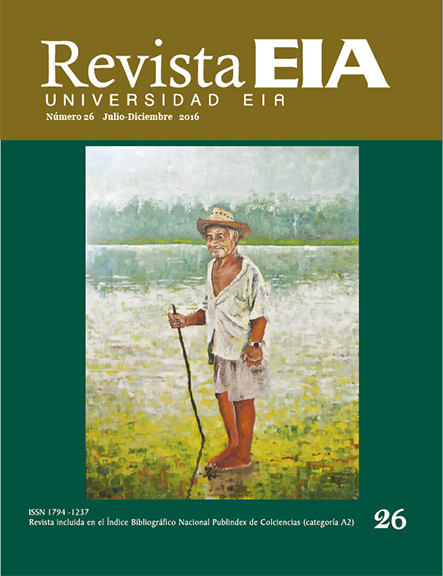Editorial
Editorial

Copyright statement
The authors exclusively assign to the Universidad EIA, with the power to assign to third parties, all the exploitation rights that derive from the works that are accepted for publication in the Revista EIA, as well as in any product derived from it and, in in particular, those of reproduction, distribution, public communication (including interactive making available) and transformation (including adaptation, modification and, where appropriate, translation), for all types of exploitation (by way of example and not limitation : in paper, electronic, online, computer or audiovisual format, as well as in any other format, even for promotional or advertising purposes and / or for the production of derivative products), for a worldwide territorial scope and for the entire duration of the rights provided for in the current published text of the Intellectual Property Law. This assignment will be made by the authors without the right to any type of remuneration or compensation.
Consequently, the author may not publish or disseminate the works that are selected for publication in the Revista EIA, neither totally nor partially, nor authorize their publication to third parties, without the prior express authorization, requested and granted in writing, from the Univeridad EIA.
Show authors biography
Las revistas científicas en tiempos de la posverdad
En el debate entre el conocimiento basado en hechos observables, con datos medibles, reproducibles y verificables, que llamamos conocimiento científico y las creencias personales, aparece una palabra artificial en inglés Post-truth que el diccionario Oxford ha escogido como la palabra de 2016 y se ha traducido al castellano como posverdad, cuya definición es “relativo a las circunstancias en las que los hechos objetivos influyen menos a la hora de modelar la opinión pública que los llamamientos a la emoción y a la creencia personal”, modelo de información usado en los medios de propaganda como método común para el proselitismo y un modo fácil de conseguir objetivos rápidos de influencia de masas.
Article visits 415 | PDF visits 308




